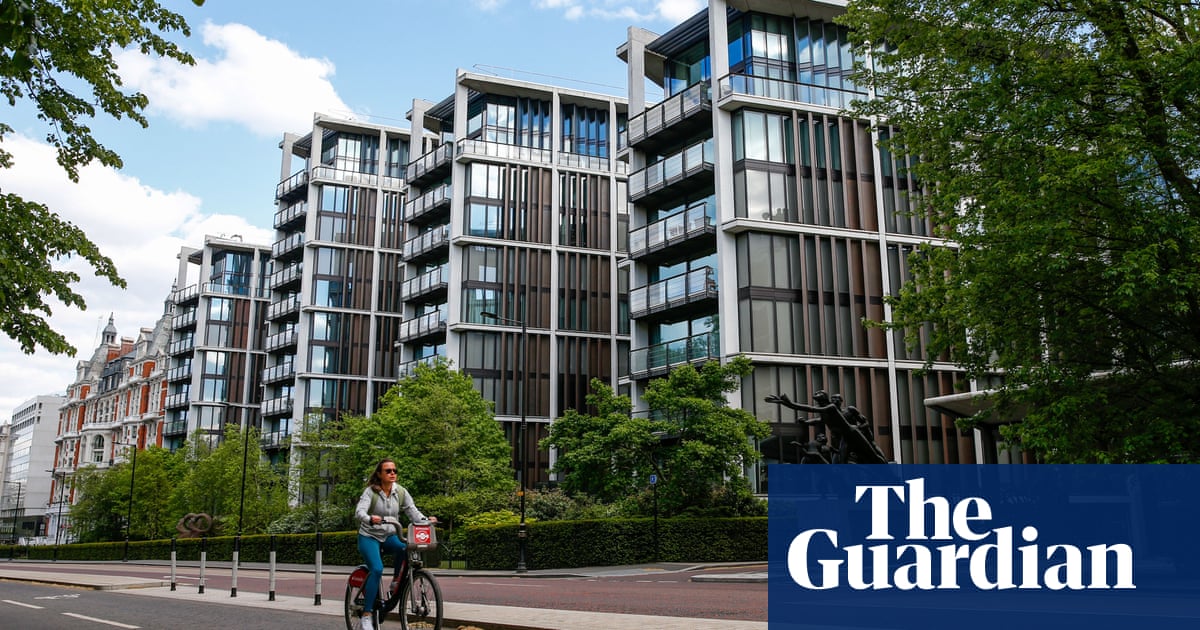
Sales of “super-prime country houses” have hit a 15-year high as rich London bankers and lawyers are using big bonuses to buy up large Downton Abbey-type mansions within easy reach of the capital.
A total of 168 homes outside London were sold for more than £5m in the year to the end of October, according to research by the estate agent Knight Frank – the most since just before the global financial crisis struck in 2007.
Knight Frank said the boom in country mansion sales was “the result of wealth creation” during and after the coronavirus pandemic, which led to a huge rise in the number of “ultra high net worth” (UHNW) individuals – those with fortunes of more than $50m (£41m) – to a record 218,200.
“While the pandemic has been challenging overall, some sectors of the economy such as financial, legal and professional services have performed strongly, and bonuses have risen sharply as firms look to attract and retain talent,” Knight Frank said in an email to agents.
Stuart Cole, the head of the agent’s north Surrey offices, which cover several billionaires’ preferred locations including St George’s Hill near Weybridge and Wentworth Estate near Virginia Water, said the surge in demand for large homes outside London that began during the pandemic was continuing.
“The upper end of the market has shifted away from overseas buyers since the pandemic, in favour of domestic consumption, although buyers from the Middle East and Asia are now returning,” Cole said. “Buyers from London are typically looking for space and greenery but with connectivity to the capital.”
London-based buyers accounted for 41% of sales in the year to the end of October 2022, compared with 24% in the year to October 2019.
Demand is strongest for the most expensivemansions, with the sale of homes in excess of £8m hitting 96, a 269% increase on the five-year average.
The estate agent Savills said it had also seen a big jump in expensive country house sales, with the number selling for more than £2m increasing by 5.5% on 2021, and by 21% over the past two years.
“Without question, 2022 was another great year for the country house market, characterised by a significant buyer pool and continued restraint on the supply of good country houses in prime locations,” said Phillippa Dalby-Welsh, the head of Savills’ country department. “Our markets were driven primarily by domestic buyers who either wanted to upsize in rural locations, purchase a second home or to leave urban areas.”
Recent sales include a Grade II-listed mansion next to Blenheim Palace that sold for £16m. Woodleys’, a 13-bedroom, seven-bathroom Georgian home with a dining room that can seat 30 people, had been owned by the same family for four generations before its sale was agreed last month. The sale has not yet been registered with the Land Registry, so the identity of the buyer or seller is not known. The ancestors of the seller bought the house in 1881.
The 1,190 sq-metre (12,800 sq ft) property is set on about 93 hectares (230 acres) and includes three cottages, several stone barns, a farmyard, and views of Blenheim Palace.
Rupert Sweeting, the head of national country sales at Knight Frank, said: “There remains a shortage of supply and deals are still happening despite some caution creeping in. However, buyers often face a once-in-a-lifetime opportunity.”
Earlier this year, the investment bank Credit Suisse said the ranks of the global UHNW had swelled by 46,000 last year to a record 218,200, as the world’s richest people benefited from “almost an explosion of wealth” during the recovery from the pandemic. The number of people in the UHNW bracket has increased by more than 50% over the past two years.
“The strong rise in financial assets resulted in an increase in inequality in 2021,” said the report by Credit Suisse, which helps manage the fortunes of many of the world’s richest people. “The rise in inequality is probably due to the surge in the value of financial assets during the Covid-19 pandemic.”
There are 3,519 bankers working in the UK making more than €1m (£880,000) a year, according to the European Banking Authority (EBA). That is more than seven times as many as in Germany, which has the second highest number of €1m-a-year bankers.
The boutique City banking advisory firm Robey Warshaw last week paid out £26.5m to its four partners, including the former Conservative chancellor George Osborne. Most of the money – £17.2m – will go to its co-founder Sir Simon Robey, who is known as the City’s “trillion-dollar man” for the cumulative size of the deals he has worked on.
Robey has paid himself at least £154m since 2013. He used some of his income to buy Bramfield Hall, a Grade II-listed, 16th-century country estate in Suffolk that had been owned by the Rabett family for 450 years.












